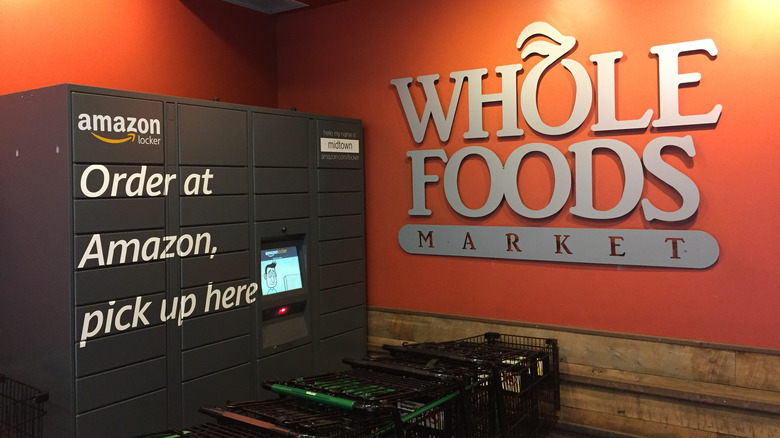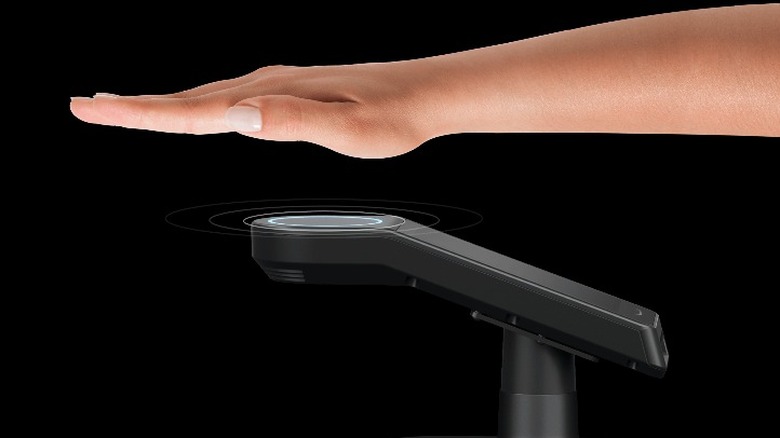The Futuristic Way You Could Soon Be Paying At Whole Foods
Since its founding in the mid-'90s, Amazon has always been a technological trailblazer — from establishing an ahead-of-its-time online marketplace to popularizing e-books and Echo devices, notes Vox. In the past several years, the retail giant has turned their focus to innovations that make shopping trips easier for customers, says Dilip Kumar, vice president, Physical Retail & Technology in a post on AboutAmazon.com. In the last year alone, the company's pandemic-inspired advances have included "Just Walk Out" technology, which lets customers physically select items off of store shelves and then leave without checking out — purchases are automatically charged to the shopper's account. There's also "Amazon Dash Cart," a smart shopping cart used in Amazon Fresh grocery stores that also helps customers skip the checkout line.
Amazon has now topped even those advancements, announcing on April 21 the launch of its latest futuristic shopping innovation: Amazon One (via their website). This brand-new payment option is starting to roll-out at Whole Foods stores, which Amazon has owned since 2017, according to Business Insider. Amazon One officially kicked off at a store in Seattle and Amazon plans to add the payment option to seven additional Whole Foods within the Pacific Northwest city in the coming months — and hopefully more national locations soon after.
Palm reading is behind the latest innovation
In one of most futuristic shopping developments yet, Amazon One takes contactless payment to the next level by reading the palm of a person's hand to charge for purchases. (And we thought we'd only ever see that in the movies!) Enrolling is quick and simple and only needs to be done once — after inserting a credit or debit card into a mobile device, the customer then hovers their hand over that device, which reads their unique "palm image" to create an individual signature that will be associated with the account. Once enrolled, checking out takes "about a second or so," says Amazon's Dilip Kumar in the announcement at AboutAmazon.com.
So how exactly does this work? Amazon explains the science in its helpful How It Works guide at One.Amazon.com, noting "your palm is made up of tiny, distinct features on and below the surface, many that are indiscernible to the human eye or a standard camera." Like fingerprints, no two palms are alike, which makes it unique to each individual person. Privacy concerns are valid, of course, and Amazon addresses those by adding, "Your palm is a personal part of you and you alone decide when to hover it, and when to keep it private." Regarding claims that Amazon's new cashier-less technologies might result in job cuts, Reuters notes that Amazon One still requires someone to scan the items and further stated that the company confirmed this will not impact jobs.

